Everything You Need to Know About Building a Gaming Computer
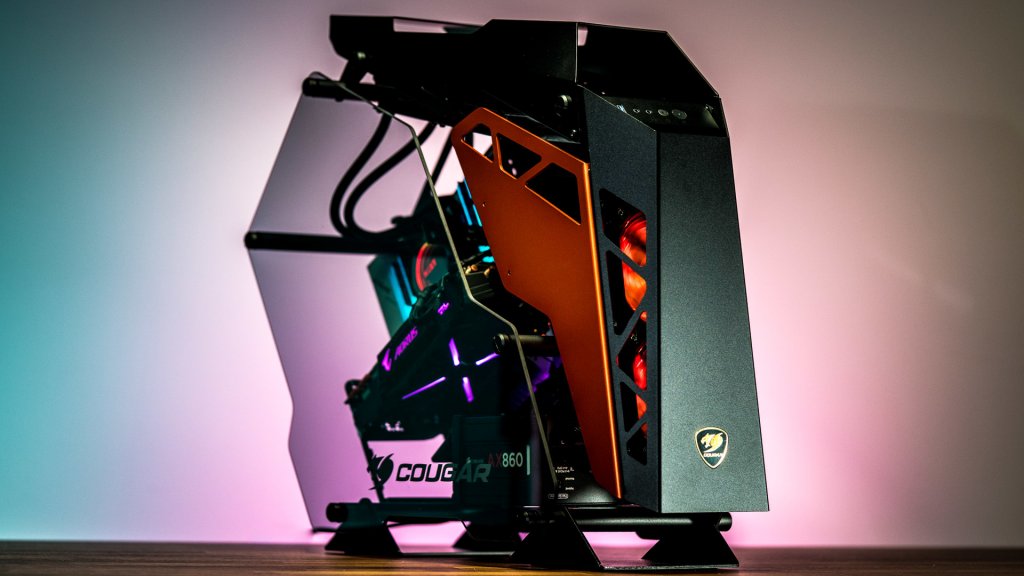
Earlier you build a PC, you lot're obviously going to demand the correct parts. That's why nosotros're here.
Picking the right components for the build you demand can be a daunting process at first, but in one case you dive in, you'll come across that information technology's not only surprisingly simple, it's a heck of a lot of fun. This guide is by no means meant to be exhaustive, it's more a primer on what you'll demand to know to get together up the right parts, and start putting your dream build together.
We'll mostly exist focused on building a gaming PC here, merely this guide should cover the nuts for everything from a high-end piece of work rig for professional person applications to a simple media computer.
And if y'all'd rather buy a pre-built, rather than building your own, we have a guide for that too.
Alright, permit's get to information technology!
What Exercise You Need to Build a PC?
Processor (CPU)
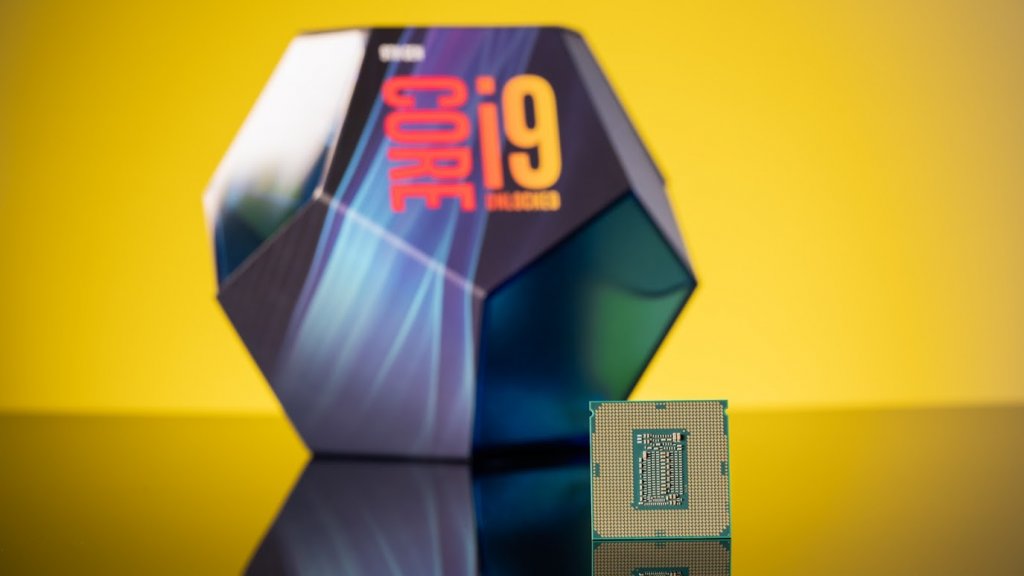 The processor, or Central Processing Unit, is the brain of the PC. Information technology'southward what converts the instructions you provide into deportment the computer can execute, and tells all the other parts of your build how to work together. If the CPU is the brain, the residuum of the organisation is the torso.
The processor, or Central Processing Unit, is the brain of the PC. Information technology'southward what converts the instructions you provide into deportment the computer can execute, and tells all the other parts of your build how to work together. If the CPU is the brain, the residuum of the organisation is the torso.
The CPU is probably the single most important component for any computer, and equally you'd await there are almost endless options at a variety of price ranges. The 2 primary manufacturers in the consumer PC space are Intel and AMD, and even inside those brands, there are enough of choices. For AMD you'll most likely be looking at Ryzen, or Threadripper if y'all want high-end. Intel's i designated CPUs are all solid choices, though you'll probably want to consider an 8th or ninth Gen i5 or i7 if y'all're looking to put together a serious gaming or streaming rig.
Motherboards
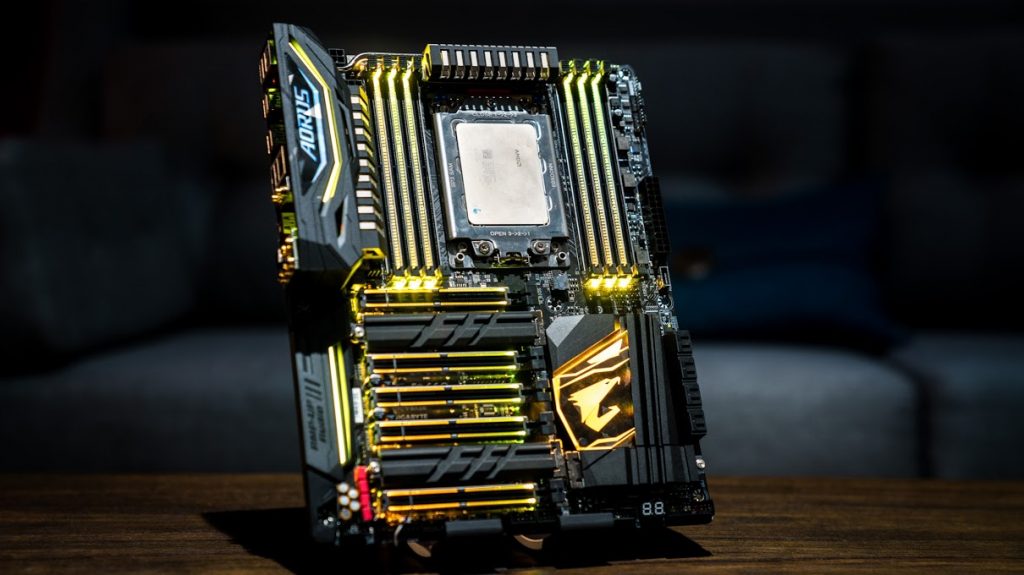
The motherboard is essentially a large circuit board that connects all the components that make upwardly your PC, and allows advice between all the unlike hardware. As with anything in PC building, there are options galore, from elementary motherboards at the lower-cease of the price spectrum all the style up to characteristic-rich boards with all sorts of bells and whistles.
The type of motherboard y'all need will largely depend on what CPU you purchased and what features you're interested in. Non every CPU works with every motherboard, so you'll want to make sure you go the right ane. Features like CPU overclocking capabilities, lighting, and connectivity options are all factors to keep in listen when purchasing a motherboard.
Check out this full breakdown on how to choose a motherboard for all the info you'll demand to make an informed decision.
Video Card/Graphics Processing Unit (GPU)

The Graphics Processing Unit of measurement (GPU) volition have the most affect on your gaming experience. The GPU is essentially what allows your estimator to practice the circuitous graphics calculations that allow your PC games to look so adept. Though many CPUs have integrated graphics, a GPU is absolutely required if yous want to take a modern PC gaming experience.
The two biggest players in the world of graphics cards are AMD and Nvidia. Depending on how much y'all want to invest, you lot tin go with something on the lower-end of modern GPUs, like the GTX 1050 Ti from Nvidia, or the Radeon RX570 from AMD. If you lot desire a cutting-edge experience, Nvidia'southward RTX 2080 Ti is the electric current king of consumer facing GPUs, with the Radeon RX Vega compages from AMD not far behind.
If you're looking for the best gaming experience, the GPU might exist the priciest component yous'll purchase, but you're not going to desire to skimp hither, specially if you're looking to get into gaming at higher resolutions and frame rates.
To learn more than about what card will work all-time for your needs, bank check out our guide on how to choose a graphics card.
Memory/RAM
 Random Admission Memory (RAM) is substantially your PC's curt-term memory. Information technology keeps data you employ regularly easily accessible, so your PC doesn't have to access a storage device every time y'all need to employ that data. Information technology's unlike from your main storage devices in that RAM resets when it doesn't take power, which is why you still demand larger storage drives for long term data storage.
Random Admission Memory (RAM) is substantially your PC's curt-term memory. Information technology keeps data you employ regularly easily accessible, so your PC doesn't have to access a storage device every time y'all need to employ that data. Information technology's unlike from your main storage devices in that RAM resets when it doesn't take power, which is why you still demand larger storage drives for long term data storage.
When it comes to RAM, the more than the merrier. You can't really have besides much RAM, but for applied purposes, well-nigh gaming systems will be fine with 16GB, or 32GB if you lot want to keep your PC viable for several years.
RAM varies widely in speed, size, and design, so check out our RAM guide for answers to any questions you might have when it comes to retentiveness.
Storage

Storage is where your information is…well, stored, so your PC tin access it. This includes files, games, your operating organisation, whatever data that you lot need to access volition be kept on a storage drive. In the by, storage by and large consisted of hard disk drives (HDD), just at present solid state drives (SSD) are more widely bachelor. SSDs are significantly faster, quieter, and more durable, simply besides cost more per gigabyte.
The correct storage solution will vary, though a common configuration is a smaller NVMe or SATA SSD for your operating organization and near ordinarily used files, and a larger HDD for your larger files. Y'all tin can as well rely on external storage solutions, which have the advantage of being portable.
The Samsung 970 Pro M.2 SSD is one of the most pop solid land solutions, and the 3TB Seagate BarraCuda HDD will work keen for larger installations and file storage.
If you want to learn more about all the different types of storage, check out our guide on choosing the correct storage.
Cases

This is where all of your precious parts are going to live, and what most people think of when they imagine a PC. Cases are one of the virtually customizable parts of a PC, and then you can get cases in but nearly every shape and size yous can imagine. Though every case is unlike, they are all designed for roughly the same components, meaning they share similarities across brands and layouts. There's always going to be a place to install the motherboard and power supply, for example, though the configurations of where everything is located may vary.
Unless you're looking to build something small, or with advanced features like custom cooling loops, most cases will work just fine. But discover one that's the right size, and looks the way yous want information technology to, and you should be proficient to go.
Some other of import feature to consider when information technology comes to cases is cooling. Many cases will come with fans already installed, which can be useful, but if low temperatures are important to you lot, you'll want to brand sure in that location'south room for the cooling solution yous demand. A unproblematic rule of thumb is that if you're wanting to do a lot of custom work, the bigger the case, the better.
If you're looking for a unique open up air design, bank check out the Thermaltake P5. If you want lighting options, have a look at the Carbide Spec-Omega RGB from Corsair. For something simple, bonny, and reliable, go along the Rosewill Cullinan in mind.
Power Supply Unit of measurement (PSU)
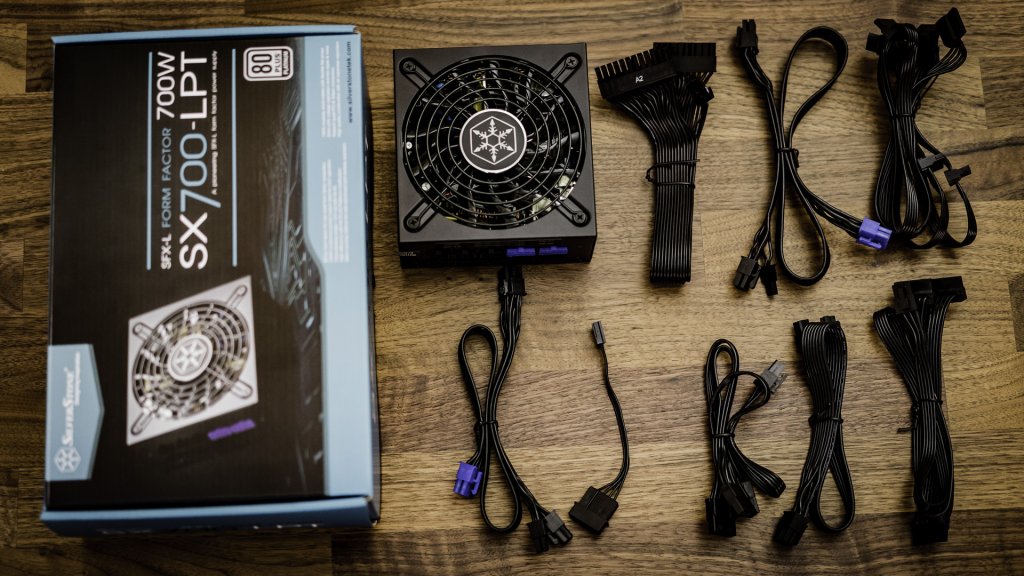
As you probably guessed by the name, the Power Supply Unit (PSU) provides the ability that allows your build to office. The PSU is ofttimes disregarded, because if you have a relatively simple build, any power supply will usually work. That said, it'southward absolutely worth doing your enquiry on efficiencies, wattage, and quality, peculiarly if y'all're putting together a more complex system. If you are using high-end video cards (or multiple video cards) or a custom cooling loop, you'll definitely want to make sure you accept a PSU with enough wattage.
A good reference is this power supply calculator, which allows you to see what kind of power requirements you'll need based on your system.
If y'all're looking for a bulky PSU for a super fancy system, you tin can go to the high-finish of the spectrum like the be quiet! Dark Power Pro 11. If something simpler is more in line with what you lot need, the EVGA SuperNOVA 550 watt ability supply might be a good fit.
CPU Heatsink/Fan
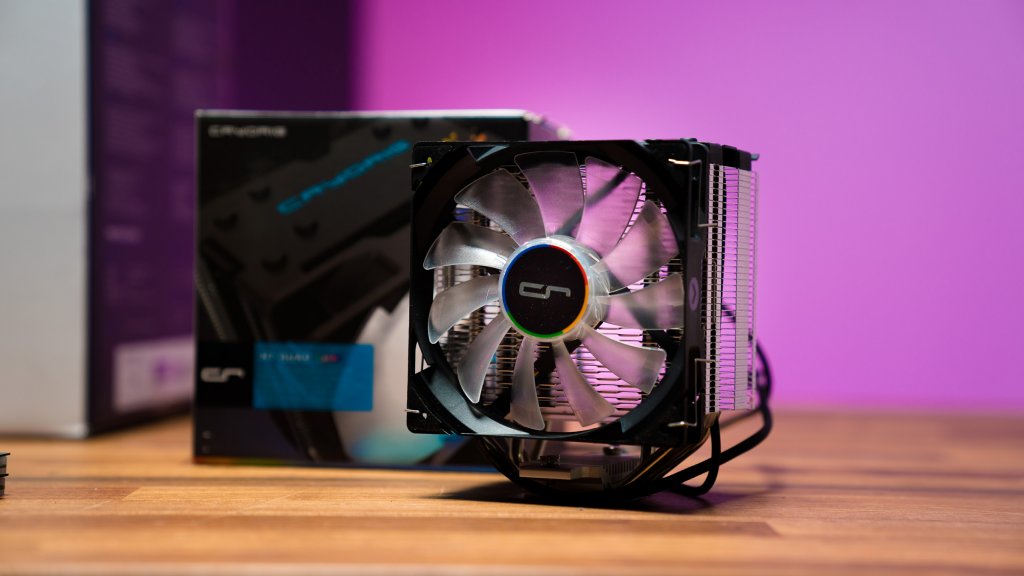
Your CPU works incredibly hard, and that creates heat.
Keeping your CPU cool is critical to your system running properly, and though many CPUs come up with a cooler, often times you'll want something a little more powerful. These options can range from simple fans and heatsinks to elaborate liquid cooling solutions. For your first build, you'll probably want either a fan based solution, or an All In 1 (AIO) liquid CPU cooler if you're planning on overclocking your CPU. The procedure of installing these cooling solutions varies from product to product, simply usually involve attaching it to your motherboard, and using thermal paste to brand sure heat is dissipated properly from your CPU.
Information technology sounds complicated, simply it's actually not. Fifty-fifty the AIO liquid coolers are self-contained, and you lot don't ever have to actually bargain with the liquid within. Only make certain the libation is compatible with your CPU and motherboard, and that yous accept plenty room in your case. The rest is just a affair of following the included instructions.
Ane of the most pop entry-level air coolers is the Cooler Master Hyper 212 EVO, perfect if you desire to upgrade from your stock fan. If you're looking to get into AIO liquid coolers, check out the NZXT Kraken X52. Non but is it a great CPU cooler, it has some crawly lighting options as well.
Monitors

Now that you've picked out the parts for your build, it's time to talk about everything else y'all'll need for a quality gaming experience. Let's start with a monitor. After all, a sweet gaming PC isn't much practiced if you tin can't meet annihilation.
You can get with a simple, entry-level 1920×1080 monitor or TV if you want, but part of the fun of PC gaming is that you lot have more options. If you invested in a good system thus far, you might desire to move up to college resolutions, like 2540×1440, or even 3840×2160 (4K) for truly crystal clear images. You can too upgrade to a higher refresh rate like 144Hz or even 240Hz, which will brand everything look significantly smoother. Depending on your GPU, y'all may want to invest in a monitor that supports either Nvidia'due south G-Sync or AMD's Freesync, every bit this will reduce screen tearing and farther amend your gameplay experience.
All of these factors, including others similar brandish size or attribute ratio, are going to increase cost. That said, there's not much bespeak in having a powerful PC if what you lot're seeing doesn't expect great, so it'south probably worth the investment.
If you're looking for a moderately priced entry-level gaming monitor, the curved Acer ED242QR has Freesync and a 144Hz refresh charge per unit, a perfect lucifer for your AMD GPU. If yous desire to become super high-end, the Asus ROG Swift PG348Q has just about everything you lot need for a luxurious gaming experience.
Mouse

A mouse is just a mouse right?
Nope. Like everything else nosotros've been talking about, you tin get a mouse that perfectly matches your style. If you're a gamer, having mappable buttons might exist important to you lot, as well as beingness able to adjust the DPI (essentially the speed of the cursor) on the wing. Maybe yous want a wireless mouse, or an outside-the-box design.
The most of import thing is probably comfort, so make sure y'all observe a mouse that feels correct. Ane of the nearly popular gaming mice (for proficient reason) is the Logitech G502 Hero, but in that location are lots of great mice out in that location from companies like Corsair, Razer, and plenty of others.
Check out our breakup on how to notice the right mouse for more info.
Reckoner Keyboards
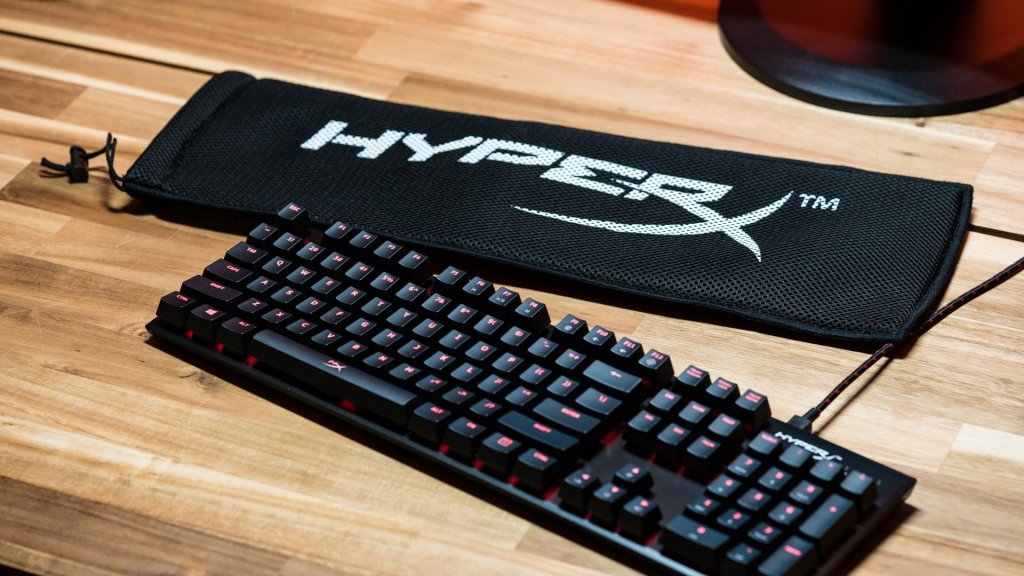
Even with something as seemingly straightforward equally a keyboard, there are a ton of options. Do you want the traditional feel of a membrane keyboard, or the precise tactile feedback of mechanical switches? Do yous want wired or wireless? Exercise you need macro keys? How important is RGB lighting?
There's a lot of great keyboards out at that place, then you can find exactly what works for y'all. One of the most popular mechanical keyboards is the Corsair K95 RGB Platinum. The HyperX Alloy FPS is a cracking entry-level mechanical board with high-quality Cherry switches.
The best way to learn your own preference is by testing unlike keyboards, but this guide on how to choose the right keyboard is also a bully identify to start.
Operating System

The Operating System (OS) is the software that allows y'all to interact with your reckoner. Once information technology's installed on your storage device (preferably a SSD,) you can then start installing all of your programs, games, and any else y'all're going to use your computer for.
In that location are several operating systems to choose from, but by far the virtually popular for the average person is Microsoft Windows, due to its widespread utilise and straightforward user experience.
Linux is besides pop, and has the added advantage of being costless, though information technology also has a scrap more of a learning curve.
Putting Together Your PC
Once you accept everything ready to go, it'southward time to actually start edifice.
This is the part that many people find intimidating, but once you get started, y'all'll meet that these components are designed to be put together easily. Every bit long as you've done your research and know everything is compatible, information technology really is like putting together a fancy Lego kit.
This video will walk y'all through the entire process:
Here are few more tips to keep in mind while y'all get started.
Installing Memory (RAM)
Retention is one of the more straightforward components to install. Showtime past pushing open the 2 tabs on either side of the RAM slot on the motherboard slot. Await to the retentivity guide to check that y'all're installing with the right orientation. Once the RAM module is lined up with the slot, just button down until yous hear a click, and so make certain the tabs are airtight. Repeat those steps for whatsoever additional memory.
Depending on your instance, it might be easier to do this before you install the motherboard into the case.
Installing the CPU

Near CPUs today don't take pins, as the connector pins are usually located on the motherboard. This is great, considering dissentious the expensive CPU is much worse than the (usually) cheaper motherboard.
The procedure may vary slightly depending on the CPU and motherboard, merely unremarkably installation follows a like pattern.
Start by unlocking the CPU bar. And then, open the CPU door, place the CPU in the right direction, (arrows marked on both volition help yous line it up), close the door, and lock the bar down. Mounting the heatsink is also dependent of your hardware, but it generally connects through the four holes closest to the CPU socket. Usually this is washed through screws or locking/twisting plastic pins. Recollect to apply a sensible portion of thermal paste when mounting the heatsink; an amount roughly the size of a pea is a good reference.
Also, exist sure to plug the CPU cooler into the motherboard and then it will have the power it needs to function. The exact process should be clearly articulated in the instructions that come with your cooler.
Again, installing the CPU and CPU cooler is best washed before the motherboard is placed in the case to go along things as elementary every bit possible.
Preparing Your Case
The first step to getting your motherboard in your case is installing standoffs. Standoffs are small-scale brass spacers that match up with the screw holes on your motherboard, and work to keep the metal on the motherboard from touching the metal in your case. Make sure to install them where spiral holes are present in the case, and consult your case manual if it isn't obvious where these holes are.
Your motherboard will come with a cover called an I/O shield. This cover should be placed over all the external connections that are visible from the outside of the case. Make sure you lot line it upwards properly and snap it on. It'southward easy to forget this step, and it can exist a hurting to go back to install it, and so practise your best to retrieve the first time.
Installing the Motherboard
 Recollect, your motherboard is essentially a huge excursion board, which means information technology'south delicate.
Recollect, your motherboard is essentially a huge excursion board, which means information technology'south delicate.
It's important to be careful as you line up the holes and add screws to all of the standoffs you placed inside your case. You want the motherboard to exist secure and not loose, but you also don't want to over-tighten the screws. If the board is bending at all, you've over-tightened.
You may need to push the motherboard slightly back towards the expansion slot cover before screwing information technology in, but as long every bit y'all line upwardly all the screws, you lot should exist good to get.
Install Everything Else
Once your motherboard is mounted, everything else is adequately straightforward. Use the video we shared in a higher place for more than particular.
The GPU will live in the PCIe slot. Brand certain y'all remove whatsoever expansion coverings, and be sure it clicks into place properly and is secured with screws in one case installed.
If y'all have an M.2 drive, carefully install it into the appropriate slot on your motherboard, and use the pocket-size screw to keep it secure. Once again, do non over-tighten.
A adept rule when installing components is to utilise a bit of force, just if you feel similar something isn't plumbing fixtures, it'due south expert to double cheque that it's in the correct place. This stuff is designed to fit together, then you lot shouldn't have to push likewise difficult.
 Your video carte, storage devices, and motherboard will all need ability from the ability supply.
Your video carte, storage devices, and motherboard will all need ability from the ability supply.
The proper cables should be included with your PSU. If not, use the adapter provided with the video card box. Your difficult bulldoze or SSD will also need a power cable, as well every bit a SATA or data cable, unless yous're using an M.2 as described in a higher place. All of these cables should be included with your devices.
The right cable to use from the ability supply to the components that need that power should exist fairly obvious. Just match the plug to the connection the component needs, and cheque whatever manuals if it isn't super clear.
Installing fans will vary on your cooling setup, but once again, it should be fairly clear what goes where. Simply match the cable to the input on your motherboard, and check your manual if yous run into whatsoever issues.
Fire It Up
Once everything is wired upwardly and looks the way you want information technology to, information technology'south time to plug in the power supply, hit that power button, and turn on your new figurer. If everything is connected properly, you should come across your motherboard's BIOS screen.
The concluding step is to install your operating system of selection, and outset using your new PC!
Error Messages
If everything didn't come up together on your first try, don't panic, this happens to the best of u.s.. It's almost always an easy fix.
Luckily, your calculator volition oft tell you what is wrong, whether in the BIOS card, or via an error message from your motherboard. This is where research comes in handy, equally whatsoever fault you lot're running into will be something someone else has probably encountered and resolved as well.
We put together a handy guide to five common PC problems and how to fix them, and then take a look at that before you spend too much time researching.
Congratulations!
Whether this is your first PC, or your fiftieth, congrats on taking the time to learn how to put a PC together. There's always more to larn, but if yous've come this far, y'all're well on your way to condign a DIY master.
Have fun, and happy PC gaming!
Source: https://www.newegg.com/insider/building-a-gaming-pc-for-the-first-time-dont-panic-this-guide-can-help-you-out/
0 Response to "Everything You Need to Know About Building a Gaming Computer"
Post a Comment